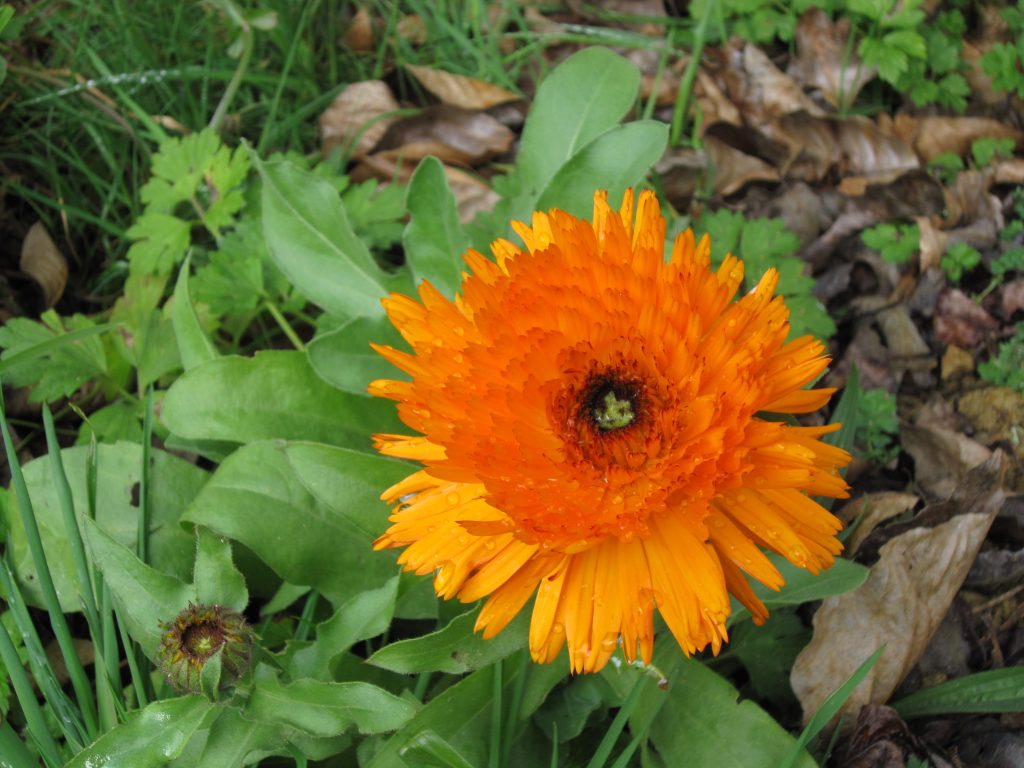Don’t you sometimes wish you could just gather up some of your seasonal medicinal herbs and stick them in a bottle and keep them for later use. Well you can, and it is literally that easy. The main concern is that you select the correct plant! Make sure you know your stuff. All plants have properties or qualities that we can harness for our use. Humans, animals and even our gardens can benefit from these natural healers.
Comfrey (symphytum) also known as knit-bone is a case in point. Much used and valued in homeopathy and by herbalists, it stimulates cell growth of the periosteum thus assisting in the fusion of broken bones. Organic gardeners value comfrey as well for the nitrogenous wealth of its leaves, placing wilted leaves at the bottom of the hole when planting potatoes or tomatoes, or perhaps as a liquid manure which is an excellent boost to fast growing plants.
Making herbal extracts or tinctures is a way of extracting and preserving the active ingredients of the plant material. It could be from flowering tops, seeds, roots, outer bark, inner bark, from the sunny side of the tree, old growth, young growth, or leaves. Some plants need to be gathered when the energy is in the top of the plant and some when the energy is in the roots. The seasons, the weather, and the location are also aspects we must take into consideration when gathering our rongoa rakau (medicine plants).
Calendula officinalis commonly known as the marigold has always been a firm favourite with herbalists and gardeners alike. Homeopaths also use this marvellous plant for healing traumas, wounds, lacerations. I studied a case where a woman had suffered for years with chronic debilitating pain in her body which began after a botched up breast reduction surgery. A few doses of homeopathic calendula freed her from the pain that she had been subject to for many years.
Used topically, calendula promotes healthy granulation of scar tissue, helps abort or mature boils and abscesses, and?makes acrid discharges healthy and free. Add a tablespoon of the tincture or extract to half a cup of warm water and use as a wash for any injuries, sores, grazes, acne, burns or even after birthing for cuts or grazes to the perineum. Alternately you could make a simple ointment with beeswax and olive oil as the base and add calendula extract as the active ingredient.
To make a calendula tincture you need.
calendula officinalis flowering tops, preferably the orange ones.

approx 100gm glass jar with a screw lid.
37.5% strength vodka.
Gather the flowering tops in the late morning of a sunny day when the dew has pretty much dried on the flowers.
Check them over and remove any bugs and fill the jar with the flowers.
Cram as many flowers as you possibly can into the jar, squashing them down if need be.
Now fill the jar up with the vodka, covering all the plant material.
Place on a sunny window-ledge for one month. Turn and gently shake the jar every once in a while.
After a month or so, you can strain off the liquid tincture, and you are ready for action!
Don’t forget to label and date the tincture, although they really do last and keep working for years.
Happy Healing!
This is a tincture not an extract.
Thanks for the clarification John, duly noted and corrected
The “100 gm jar” is more like 100 OZ?
Grams are for weight.Liquid measure would be ml,liters,or ounces. Vodka is generally 80proof which is 40% alcohol. Higher proofs are available though.Your “37.5%” is 75 proof.Thanks!
Hi bv, yes the 100gms, 100oz work out pretty much the same. It was just ensuring that you used a smallish jar. And yes 37.5% alcohol strength vodka is pretty standard around these parts. Tricia